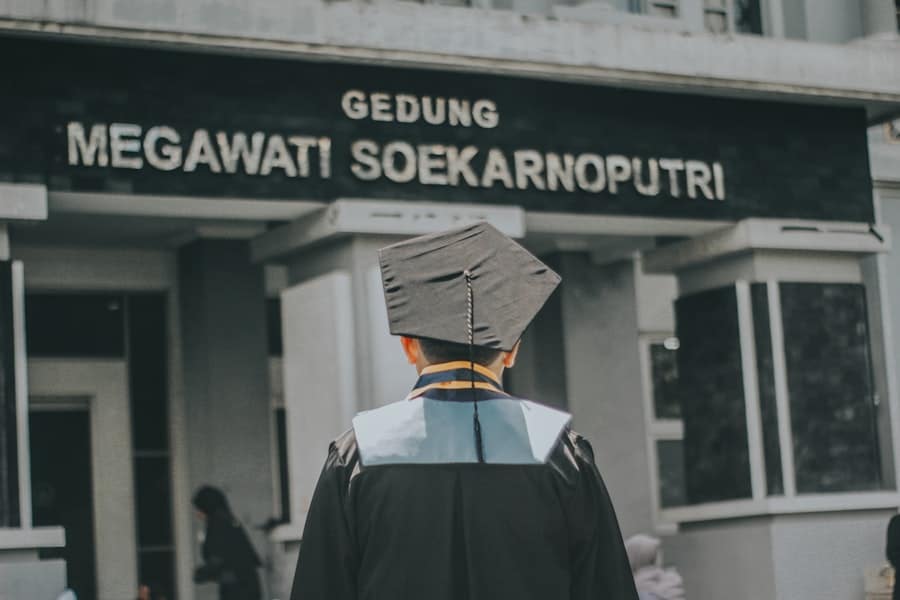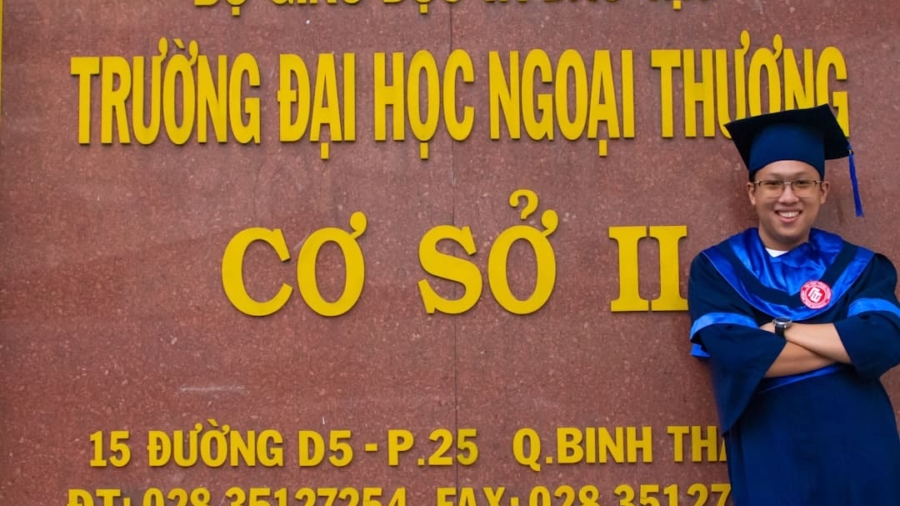In recent years, the landscape of academic verification has undergone a significant transformation, largely driven by the advent of blockchain technology. Initially conceived as the backbone for cryptocurrencies like Bitcoin, blockchain has evolved into a versatile tool with applications across various sectors, including education. The immutable and decentralized nature of blockchain makes it an ideal solution for verifying academic credentials, which have historically been susceptible to fraud and misrepresentation.
As educational institutions and employers increasingly seek reliable methods to authenticate qualifications, blockchain credentials have emerged as a promising alternative to traditional verification processes. The rise of blockchain credentials can be attributed to several factors, including the growing demand for transparency and efficiency in academic verification. Traditional methods often involve lengthy processes that require extensive paperwork and manual checks, leading to delays and potential errors.
In contrast, blockchain technology allows for real-time verification of academic achievements, enabling institutions to issue digital diplomas and certificates that can be easily accessed and verified by employers or other educational entities. This shift not only streamlines the verification process but also enhances trust in the authenticity of academic records.
Key Takeaways
- Blockchain credentials are on the rise for academic verification, offering a secure and transparent way to authenticate academic achievements.
- Advantages of blockchain credentials for academic verification include immutability, transparency, and the ability to streamline the verification process.
- Challenges and limitations of blockchain credentials in academic verification include the need for standardization, potential for data breaches, and the requirement for widespread adoption.
- Institutions play a crucial role in implementing blockchain credentials, including establishing standards, ensuring data accuracy, and promoting trust in the system.
- Blockchain credentials have the potential to significantly impact academic fraud by providing a tamper-proof and easily verifiable record of academic achievements.
- The future of traditional academic transcripts may be influenced by the rise of blockchain credentials, as they offer a more secure and efficient alternative for academic verification.
- Potential use cases for blockchain credentials beyond academic verification include professional certifications, licenses, and identity verification.
- Ensuring security and privacy in blockchain credentials for academic verification is essential, requiring robust encryption, data protection measures, and compliance with privacy regulations.
Advantages of Blockchain Credentials for Academic Verification
One of the most significant advantages of blockchain credentials is their inherent security. Each credential is stored on a decentralized ledger, making it nearly impossible for unauthorized parties to alter or forge academic records. This level of security is particularly crucial in an era where academic fraud is on the rise, with fake diplomas and degrees becoming increasingly sophisticated.
By utilizing blockchain technology, educational institutions can ensure that their graduates’ achievements are verifiable and tamper-proof, thereby safeguarding their reputation and the integrity of their programs. Another notable benefit is the increased accessibility that blockchain credentials provide. Graduates can easily share their verified credentials with potential employers or other educational institutions without the need for intermediaries.
This not only expedites the hiring process but also empowers individuals to take control of their academic records. Furthermore, blockchain credentials can be designed to include a wide range of information, such as course details, grades, and even skills acquired during the educational journey. This comprehensive approach allows employers to gain a deeper understanding of a candidate’s qualifications beyond what traditional transcripts offer.
Challenges and Limitations of Blockchain Credentials in Academic Verification

Despite the numerous advantages associated with blockchain credentials, several challenges and limitations must be addressed before widespread adoption can occur. One significant hurdle is the lack of standardization across different institutions and jurisdictions. Currently, there is no universally accepted framework for issuing or verifying blockchain-based academic credentials, which can lead to confusion and inconsistency in how these records are interpreted.
Without a common standard, employers may be hesitant to fully embrace blockchain credentials, fearing that they may not accurately reflect a candidate’s qualifications. Additionally, the technological infrastructure required to implement blockchain solutions can be a barrier for many educational institutions, particularly those with limited resources. Transitioning from traditional record-keeping systems to a blockchain-based approach necessitates significant investment in technology and training for staff.
Smaller institutions may struggle to allocate the necessary funds or expertise to develop and maintain such systems, potentially widening the gap between well-funded universities and those with fewer resources. This disparity could hinder the equitable distribution of blockchain benefits across the educational landscape.
The Role of Institutions in Implementing Blockchain Credentials
Educational institutions play a pivotal role in the successful implementation of blockchain credentials for academic verification. To harness the full potential of this technology, institutions must first recognize its value and commit to integrating it into their existing systems. This involves not only adopting blockchain technology but also collaborating with other stakeholders, such as employers and regulatory bodies, to establish best practices and standards for credential issuance and verification.
Moreover, institutions must invest in educating their staff and students about blockchain technology and its implications for academic verification. By fostering a culture of innovation and adaptability, educational institutions can better prepare themselves for the future landscape of credentialing. This includes providing training programs that equip staff with the necessary skills to manage blockchain systems effectively while also educating students on how to leverage their digital credentials in the job market.
The Impact of Blockchain Credentials on Academic Fraud
The introduction of blockchain credentials has the potential to significantly reduce instances of academic fraud. Traditional methods of verifying academic achievements often rely on third-party services that can be manipulated or compromised. In contrast, blockchain’s decentralized nature ensures that once a credential is issued, it cannot be altered without consensus from all parties involved in the network.
This level of transparency acts as a deterrent against fraudulent activities, as individuals are less likely to attempt to forge documents that are securely stored on a public ledger. Furthermore, the ability to track and verify credentials in real-time enhances accountability among educational institutions. As employers increasingly demand proof of qualifications before hiring candidates, institutions are incentivized to maintain accurate records and uphold high standards in their programs.
This shift not only protects the integrity of academic achievements but also fosters a culture of honesty and ethical behavior within educational environments.
The Future of Traditional Academic Transcripts in the Age of Blockchain Credentials

The Limitations of Traditional Transcripts
Conventional transcripts have several drawbacks, including their susceptibility to errors and misinterpretation. In contrast, blockchain-based credentials offer a more streamlined and efficient alternative that aligns with the demands of a rapidly evolving job market.
A Hybrid Approach to Academic Verification
Rather than replacing traditional transcripts entirely, educational institutions could adopt hybrid models that incorporate both formats. This would allow students to choose how they wish to present their qualifications, catering to diverse needs and gradually transitioning towards more modern verification methods.
Coexistence and Evolution
In this dual approach, students could receive a digital diploma on a blockchain platform while still obtaining a traditional transcript for specific purposes or audiences that require it.
Potential Use Cases for Blockchain Credentials Beyond Academic Verification
The applications of blockchain credentials extend far beyond academic verification, presenting opportunities across various sectors. One notable use case is in professional certifications and licenses. Many industries require individuals to obtain specific certifications to practice legally or advance in their careers.
By utilizing blockchain technology, organizations can issue verifiable digital certificates that are easily accessible and resistant to fraud. This not only simplifies the verification process for employers but also enhances trust in the qualifications held by professionals. Another promising application lies in lifelong learning and skills development.
As the job market continues to evolve rapidly due to technological advancements, individuals are increasingly seeking opportunities for continuous education and skill enhancement. Blockchain credentials can facilitate this by allowing learners to accumulate verifiable records of their achievements across multiple platforms and institutions. This comprehensive portfolio can then be shared with potential employers or educational entities, showcasing an individual’s commitment to personal growth and adaptability in an ever-changing landscape.
Ensuring Security and Privacy in Blockchain Credentials for Academic Verification
While blockchain technology offers enhanced security features, ensuring privacy remains a critical concern when it comes to academic verification. The decentralized nature of blockchain means that information is stored across multiple nodes, which can raise questions about data ownership and access control. Educational institutions must implement robust privacy measures to protect sensitive student information while still allowing for transparent verification processes.
One approach is the use of permissioned blockchains, where access to certain data is restricted to authorized parties only. This allows institutions to maintain control over who can view specific information while still benefiting from the security features inherent in blockchain technology. Additionally, employing cryptographic techniques can further enhance privacy by ensuring that personal data is encrypted before being stored on the blockchain.
By prioritizing security and privacy in their implementation strategies, educational institutions can foster trust among students and employers alike while leveraging the advantages offered by blockchain credentials for academic verification.
One such tool is 3D modeling software, which can enhance learning experiences and foster creativity in students. For more information on the best free software for 3D modeling in 2023, check out this article.
FAQs
What are blockchain credentials in academic verification?
Blockchain credentials in academic verification refer to the use of blockchain technology to securely and transparently verify academic credentials such as degrees, diplomas, and certifications. This technology ensures that the credentials are tamper-proof and can be easily verified by employers, educational institutions, and other relevant parties.
How does blockchain technology improve academic verification?
Blockchain technology improves academic verification by providing a decentralized and immutable ledger that securely stores academic credentials. This eliminates the need for third-party verification services and reduces the risk of credential fraud. Additionally, blockchain technology allows for instant and transparent verification of credentials, saving time and resources for both the issuing institutions and the verifying parties.
What are the benefits of using blockchain credentials in academic verification?
The benefits of using blockchain credentials in academic verification include increased security and trust in the verification process, reduced administrative burden for educational institutions, and improved efficiency in credential verification. Blockchain credentials also provide individuals with greater control over their own academic records and the ability to share them securely with potential employers and other stakeholders.
What are some potential challenges of implementing blockchain credentials in academic verification?
Some potential challenges of implementing blockchain credentials in academic verification include the need for widespread adoption and standardization of the technology, concerns about data privacy and security, and the initial investment required to develop and implement blockchain-based verification systems. Additionally, there may be resistance to change from traditional verification processes and stakeholders.
What is the future outlook for blockchain credentials in academic verification?
The future outlook for blockchain credentials in academic verification is promising, as more educational institutions and employers recognize the benefits of using blockchain technology for secure and efficient credential verification. As the technology continues to evolve and mature, it is likely that blockchain credentials will become the standard for academic verification, providing a trusted and transparent way to verify academic credentials.

